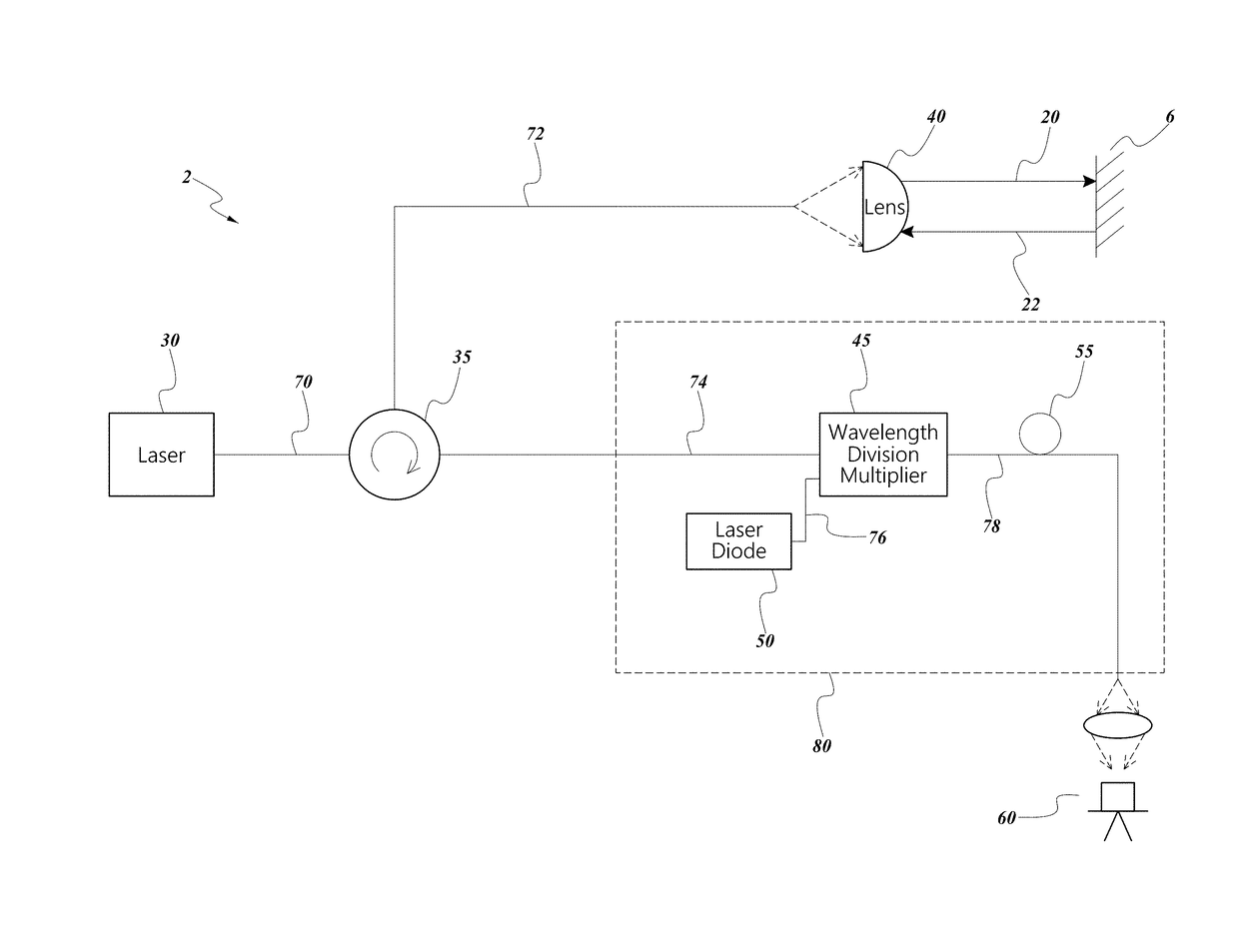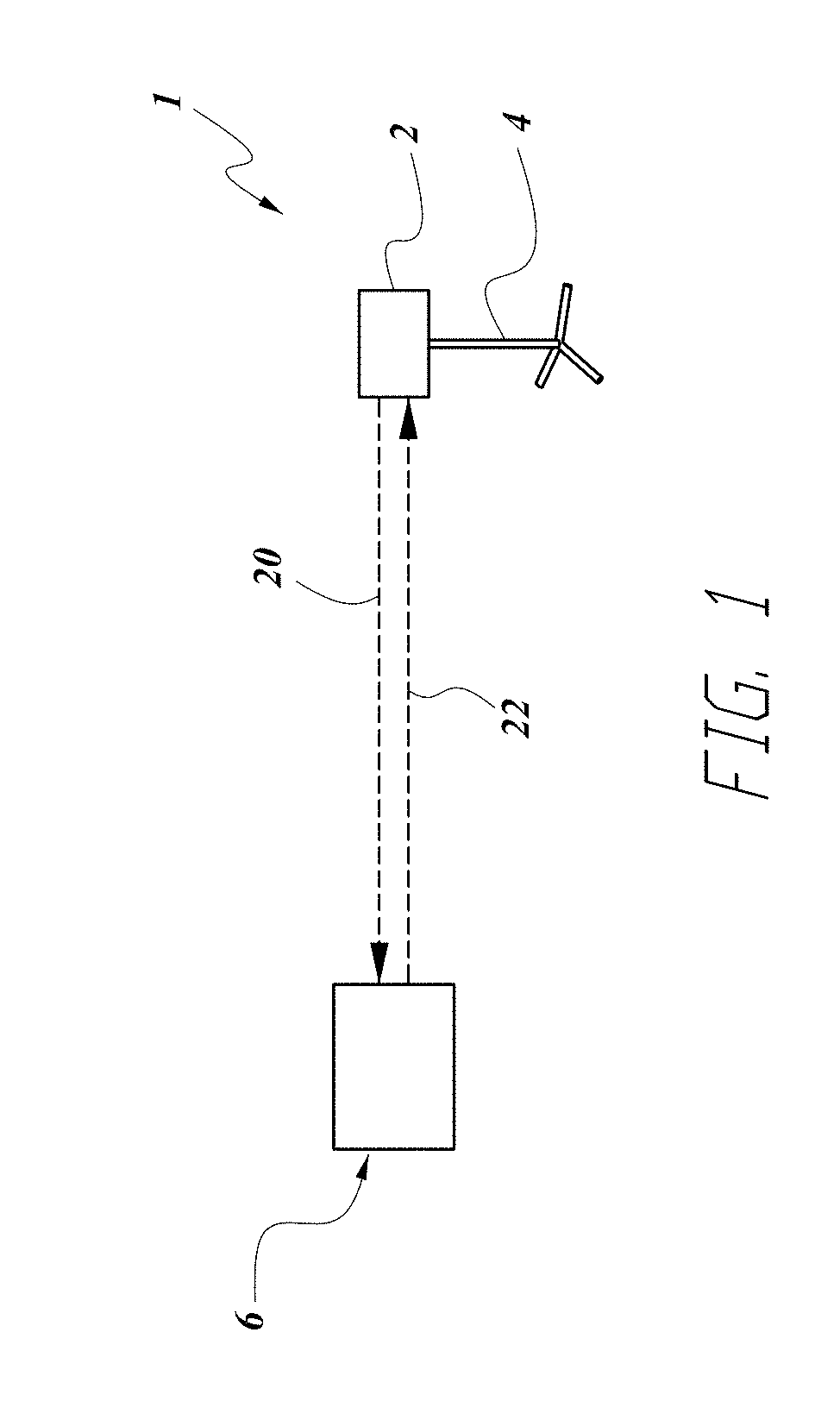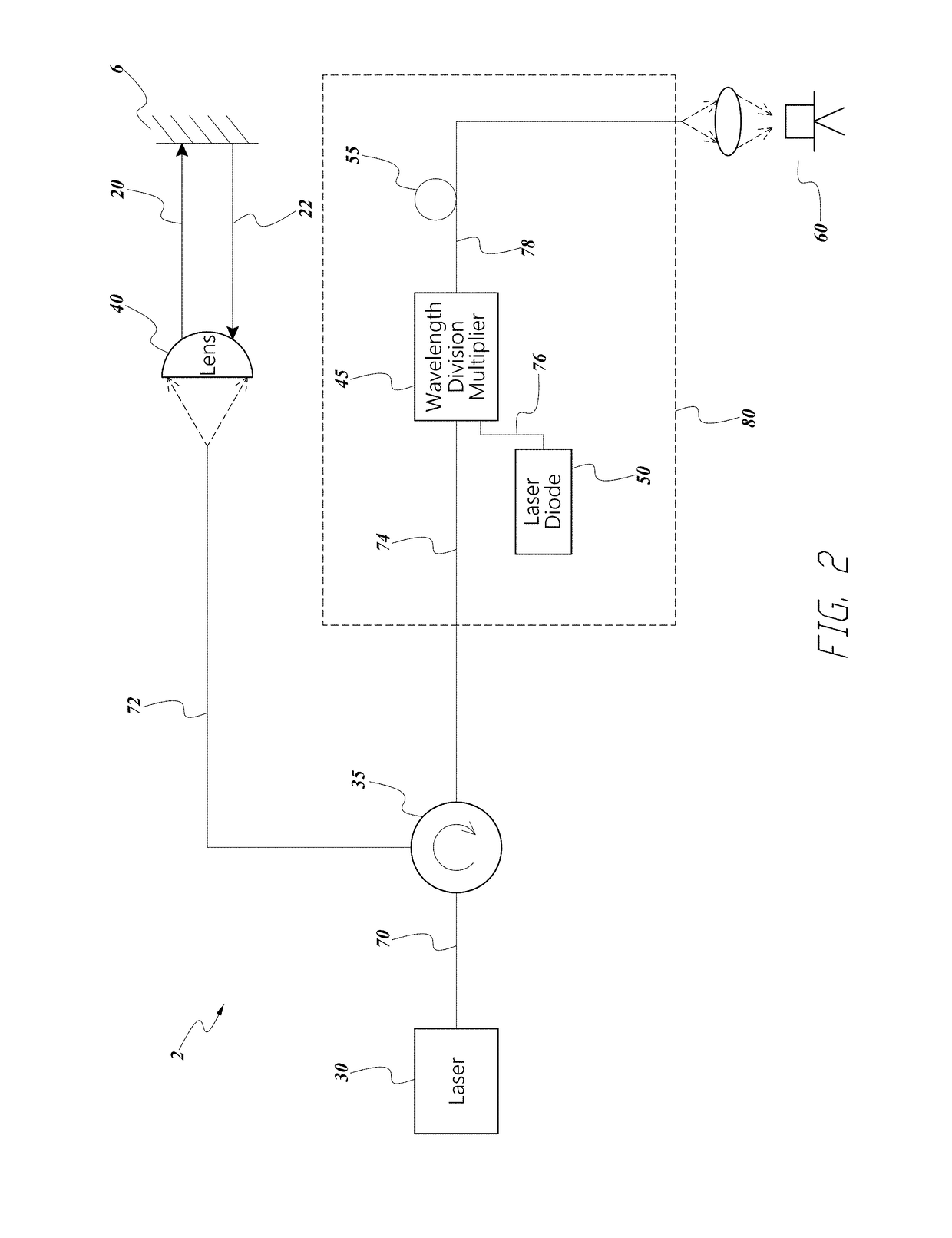Lidar scanner with optical amplification
- Summary
- Abstract
- Description
- Claims
- Application Information
AI Technical Summary
Benefits of technology
Problems solved by technology
Method used
Image
Examples
Embodiment Construction
[0015]FIG. 1 depicts an embodiment position sensing device 1. The position sensing device is shown in an arbitrary environment including an object 6. It will be understood that the position sensing device 1 can be used in a variety of environments such as a construction site, a mine, a laboratory, on an autonomous vehicle, or other indoor and outdoor environments. The position sensing device 1 can be configured to measure at least one point, or further at least one spatial map of a portion of the environment, such as the object 6. For example, in the context of an autonomous vehicle, the object 6 measured by the position sensing device 1 can be the road or one or more cars on the road. In some embodiments the position sensing device 1 can measure a particular set of separate and discrete points, whereas in further embodiments the position sensing device 1 can measure a continuous span of points, as will be described further below. The measurement can be made using a brief electromag...
PUM
 Login to view more
Login to view more Abstract
Description
Claims
Application Information
 Login to view more
Login to view more - R&D Engineer
- R&D Manager
- IP Professional
- Industry Leading Data Capabilities
- Powerful AI technology
- Patent DNA Extraction
Browse by: Latest US Patents, China's latest patents, Technical Efficacy Thesaurus, Application Domain, Technology Topic.
© 2024 PatSnap. All rights reserved.Legal|Privacy policy|Modern Slavery Act Transparency Statement|Sitemap



